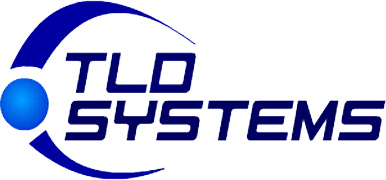“I know things have changed a little for removal of retained hardware and I am seeking clarification for a scenario. A patient has previously had an Austin Akin bunionectomy. It healed uneventfully. Years later, she has developed pain at the retained screw in the metatarsal. There is a k-wire noted in the proximal phalanx. X-rays showed complete healing at the osteotomies. The patient would like to have both implants removed despite only one of them hurting today. How would the changes in CPT coding apply to this situation? Thank you for the help.”
2022 Coding Change/Update – Implant vs. Foreign Body:
It is important to access the 2022 CPT Manual. Under Surgery Guidelines, you need to access the “Foreign Body/Implant Definition.”
“An object intentionally placed by a physician of other qualified health care professional for any purpose (eg. diagnostic or therapeutic) is considered an implant. An object that is unintentionally placed (eg. trauma or ingestion) is considered a foreign body. If an implant (or part thereof) has moved from its original position or is structurally broken and no longer serves its intended purpose or presents a hazard to the patient, it qualifies as a foreign body for coding purposes, unless CPT coding instructions direct otherwise or a specific CPT code exists to describe the removal of that broken/moved implant.”
Here are the CPT codes of note:
If an implant needs to be removed (ie. internal fixation): CPT 20680 Removal of implant; deep (e.g., buried wire, pin, screw, metal band, nail, rod or plate)
If Foreign Body is Removed:
CPT 28190 Removal of foreign body, foot; subcutaneous
CPT 28192 Removal of foreign body, foot; deep
CPT 28193 Removal of foreign body, foot; complicated
The patient in the above post had a hallux valgus correction performed. The correction consisted of a distal first metatarsal osteotomy that was fixated with a screw and an osteotomy within the proximal phalanx of the great toe that was fixated with a K-wire. Years after the procedure was performed, pain developed at the site of the retained screw within the distal aspect of the first metatarsal. X-rays demonstrated that there was complete healing at the osteotomy site. The screw did not move from its original position. It was not structurally broken. It was serving its intended purpose. It was not a hazard to the patient. There was pain. I would not classify this situation as one of a foreign body. The implant aka the screw needed to be removed. Therefore, I would code the removal of the screw with CPT code 20680 appended by the RT or the LT modifier depending upon the foot that had the bunionectomy.
With respect to the K-wire within the proximal phalanx of the great toe, this creates a different scenario. X-rays demonstrated that there was complete healing at the osteotomy site. The K-wire did not move from its original position. It is not structurally broken. It was serving its intended purpose. It was not a hazard to the patient. There was no pain. The patient just wanted it removed. How should this be coded? Well, for coding purposes, this would not be classified as a foreign body. If the patient just wants the K-wire removed, would this still be classified as the removal of an implant? It sure appears so. Therefore, it would be appropriate to code the removal of the K-wire using CPT code 20680 appended by the T5 or TA modifier depending upon the foot that had the bunionectomy.
I do have an issue, though. Despite the fact that two osteotomies were performed to correct the hallux valgus deformity, the two osteotomies are in close proximity to each other anatomically. Would two separate isolated incisions be needed to remove both implants. In reality, I would think not.
However, I believe that CPT code 20680 should be billed a second time for the removal of the K-wire within the proximal phalanx of the great toe .
The coding scenario would be the following:
CPT 20680 – RT/LT
CPT code 20680 – 59, T5/TA
This is my opinion.
Michael G. Warshaw, DPM, CPC
Terrific NEWS!!!
THE 2025 PODIATRY CODING MANUAL IS NOW AVAILABLE in either Book or Flash-drive formats. It has been completely updated for the calendar year 2025 including the NEW policy for the application of skin substitutes that goes into effect February 12, 2025. Many offices across the country consider this to be their “Bible” when it comes to coding, billing, and documentation. The price is still only 125.00 including shipping! To purchase, access the website drmikethecoder.com.
No credit card? No problem! Just send a check for $125 to the following address:
Dr. Michael G. Warshaw
2027 Bayside Avenue
Mount Dora, Florida 32757



Read Comments